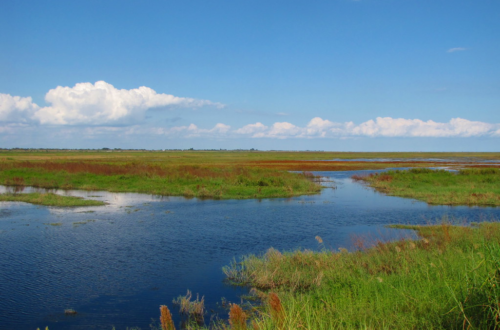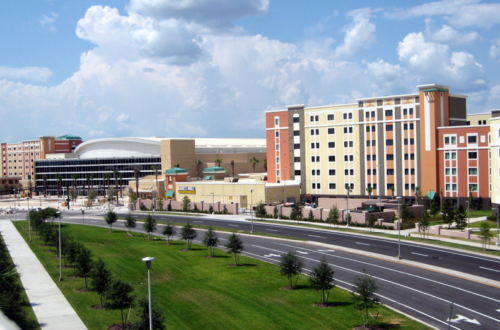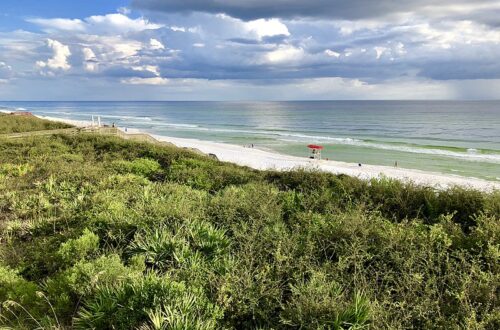Florida home insurance premiums are expected to rise next year. The rise in prices can be attributed to an increase in hurricanes, reinsurance payments and lawsuits.
Due to environmental pressures, homeowners in coastal areas are already accustomed to fluctuations in insurance premiums. However, next year’s increase is expected to be seen throughout Florida, particularly in central Florida.
With 29 named storms, the 2020 Atlantic hurricane season set the record for the highest number of tropical and subtropical storms. Since 2016, the Atlantic has experienced above-average hurricane activity annually.
More hurricanes lead to more property damage. According to their policies, insurance companies must dedicate funds to homeowners if the storms damage an insured property.
“Unfortunately, these developments have presented challenges not only to our property industry but also to our consumers,” said Alexis Bakofsky, Florida Office of Insurance Regulation (OIR) director of communications. “After multiple years of rate decreases, OIR is seeing an increase in proposed average annual premium increases for Florida homeowners’ rates.”
The issue is that the Atlantic has now faced five consecutive years of high hurricane activity. These natural disasters have drained insurance funds and caused insurance companies to rely on reinsurance.
Reinsurance is when an insurance company is insured by another insurance company. The more insurance companies rely on reinsurance funds then the less funds they will have themselves.
A rise in litigation has also absorbed a portion of insurance funds.
Experts say that there is a spike in overinflated lawsuits. In these lawsuits, attorneys claim that certain property damages, such as busted pipes, are caused by storms as part of a plot to obtain payments from insurance companies.
Trying a case in court is expensive. It’s yet another cost that the insurance company needs to pay.
According to Florida law, insurance claims for a named storm can be filed for up to three years after the storm hits. This is further complicated by the high number of storms seen over the past five years.
Claims from Hurricanes Michael and Irma put a particular strain on insurance companies. Hurricane Michael caused $7.9 billion in insured losses, while Hurricane Irma caused $17.4 billion in insured losses.
All three of these factors have compounded and resulted in where we are today. Numerous insurance companies have requested premium rate increases with one as high as 47%.
There are several potential solutions to solve this drop of funds.
One possibility is for insurance companies to pay claims when they are filed rather than rejecting them. This would greatly reduce the number of claims that wind up in court and subsequently save legal fees for insurers.
Another possibility is legislation. Senate President Wilton Simpson, R-Trilby, said lawmakers would consider proposals to limit multiplying attorneys’ fees or reduce the amount of time to file a claim from three years to one year.
Critics, such as attorneys and legislators, fear that such legislation will hurt homeowners’ ability to sue insurers that deny or delay paying out claims without cause.
With more restrictions on attorney involvement, insurance companies have less incentive to pay claims. This ultimately hurts homeowners who do not receive payments and then have limited ability to take their case to court.
A lull in hurricane activity would help relieve the strain on insurance companies by giving insurers time to catch up on lost funds from all the previous storms.
While it is still early, the hurricane prognosis for 2021 is not promising. Forecasters at Colorado State University predict there is a 35% chance of an “above-average” season and a 25% chance of an “extremely active” season.
Raising insurance premiums would provide insurers with the funds they need, though this puts the financial strain directly on homeowners. Home insurance premiums are expected to rise in Florida based on the multitude of insurance companies that have requested a rate increase.
For price increases above 15%, insurance companies are required to submit a request to the Florida Office of Insurance Regulation.
The OIR has received requests for rate increases of 31%, 28% and 26% from Southern Fidelity Property & Casualty, National Specialty Insurance Co. and Capital Preferred Insurance Co. respectively. This is merely a handful in a series of insurance companies that have requested a hike in rates.
In terms of what homeowners can do, people should be aware of the expected price increase and keep an eye out on the 2021 hurricane season.
Check out other recent articles from the Florida Political Review here.
Featured image: A house located in Sneads, Florida. Unmodified photo by Ebyabe used under a Creative Commons license. (https://bit.ly/3hwaJi8)





